Old House of Tan Ky is the first building honored as a National Heritage in Hoi An and is often included in the top destinations in this ancient land. The house not only showcases the architectural style of Vietnam, China, and Japan but also preserves many valuable antiques. Let’s explore this unique house together with DanangPrivateCar.com!
Table of Contents
Where is Old House of Tan Ky located?
- Address: 101 Nguyen Thai Hoc, Hoi An, Quang Nam province.
It is situated right on the bustling Nguyen Thai Hoc Street in the ancient town of Hoi An. This house is considered a “Living Museum” as it is a testament to the longstanding cultural value. Especially, it preserves many valuable antiques that are hundreds of years old.
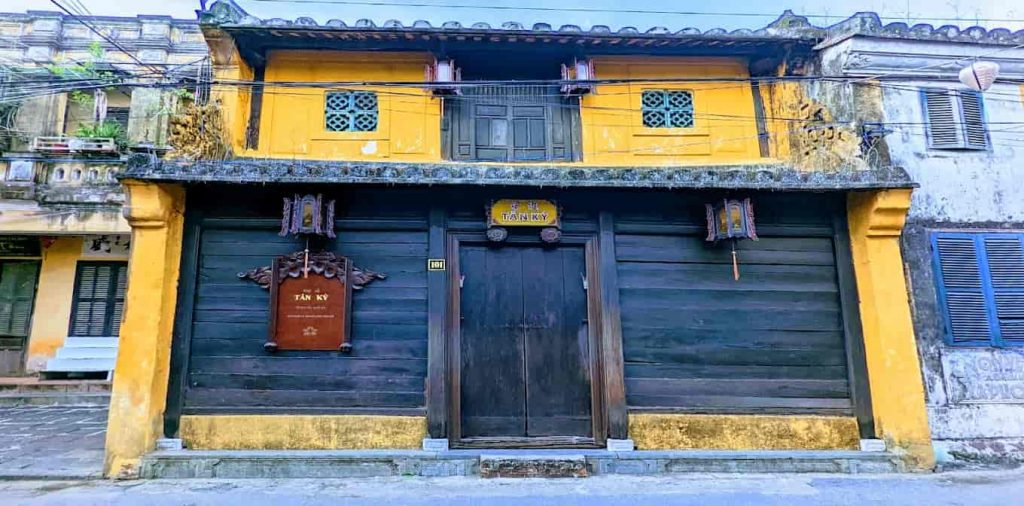
Visitors here not only admire the unique architecture of a Hoi An ancient house but also learn about the lifestyle of ancient Vietnamese people.
Learn about the history Old House of Tan Ky – Over 200 years of national history.
Tan Ky Ancient House was built in 1741 by a Chinese merchant named Le Cong. Later, his descendants changed the name of the house to Tan Ky. Over the course of more than 200 years, the house has witnessed the ups and downs of this place and its owning family. This building belongs to the Le family, with 7 generations having lived here, creating a space that is still very authentic and intimate to each person.
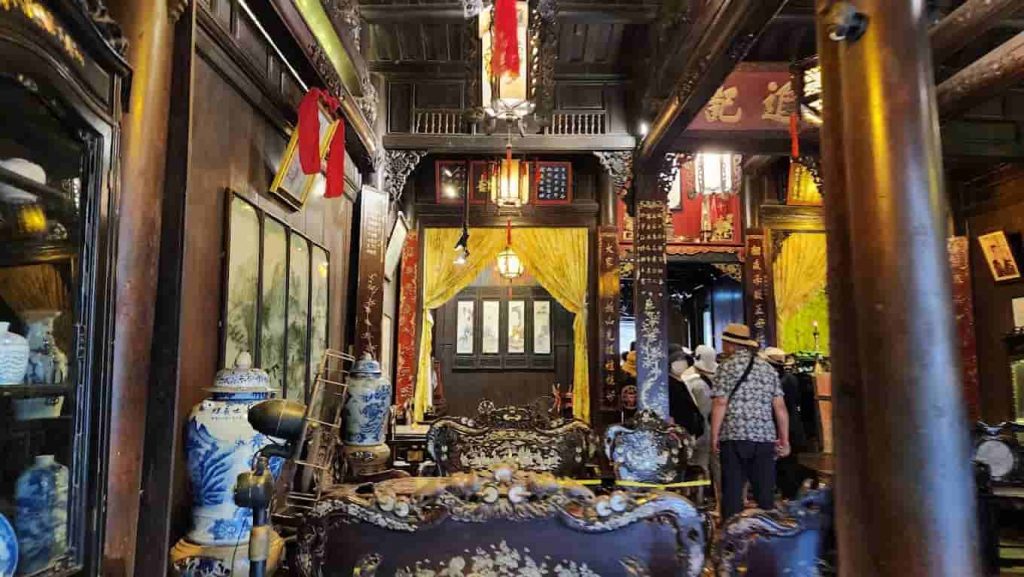
In the past, Mr. Le Cong was a Chinese businessman who came to Hoi An for trading. He was the first person to bring highland agricultural products here for business, thanks to the convenient geographical location. In front of the house is the bustling Nguyen Thai Hoc Street, always crowded with buyers and sellers. Behind it, the house leans against the Thu Bon River for the most convenient import of goods.
During the time of Le Cong’s descendants, the house was renamed Tan Ky, meaning prosperity and seeking the development of business.
Since then, Tan Ky Ancient House in Hoi An has stood firm, witnessing countless changes in history. In 1964, a historic flood submerged the ground floor of the house. Perhaps due to the owner’s meticulous preservation, the house remained strong and defiant in the face of destruction and erosion by time.
Tan Ky became a National Heritage.
In 1990, the house was recognized by UNESCO as a World Cultural Heritage and was also acknowledged as a National Heritage. What is special is that this ancient house was the first building to be recognized as a National Heritage.
All of this proves the long-standing and unique nature of the house. Currently, the owner of the house still lives on the upper floor, while the lower floor is open for visitors to explore.
Old House of Tan Ky in Hoi An and its unique features that cannot be found anywhere else.
It can be said that Tan Ky is a house following the Chinese architectural style, but it is combined with Vietnamese and Japanese architectural influences. All of these elements create a distinctive and unique picture that cannot be found elsewhere.
Vietnamese architectural features in the ancient house.
The prominent feature of traditional Vietnamese architecture in Tan Ky Ancient House is that it consists of 3 sections. The roof is tiled with Yin-Yang tiles, symbolizing harmony within the house. Notably, the columns, beams, and joints are connected without the use of nails but through traditional joinery techniques.

All of the wood is intricately carved with various motifs such as bats, red melons, pomegranates, dragon heads, and fish tails. These are symbolic creatures representing wealth, prosperity, and development, which everyone desires in their lifetime.
Chinese architectural influence.
The architectural style of Tan Ky Ancient House in Hoi An has a tube-shaped structure with multiple separate rooms, following the traditional Chinese design. The difference is that the entire ancient house does not have windows, yet it is still airy and not stuffy.
This is the perfect architectural style of the Chinese people. In the middle, there is a design feature called a sky well. It is designed to make use of natural light and to draw in cool breezes, creating a refreshing atmosphere for the rooms.
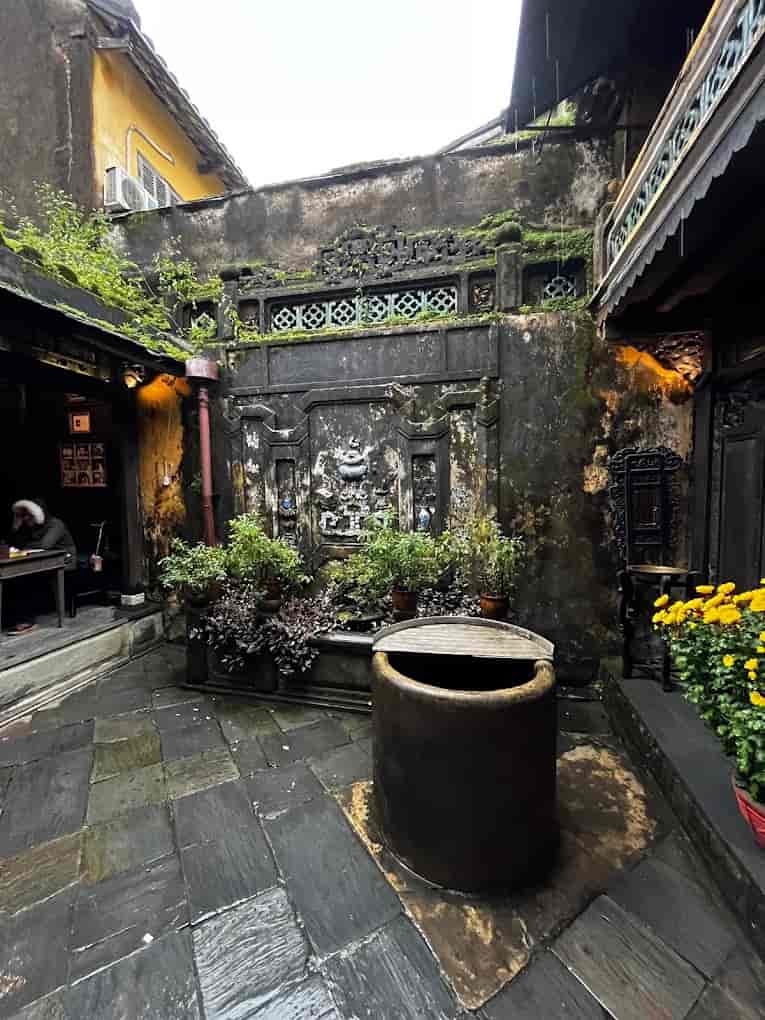
Japanese architectural influence in Tan Ky Ancient House.
According to the description of this ancient house, the living room is built based on the Feng Shui principles of the five elements. Combined with the Yin-Yang tiles, it creates a warm atmosphere in winter and a cool one in summer. This is a characteristic of ancient Japanese architecture.
Materials and interior structure of the Hoi An ancient house.
In addition to the wealth of the house owner, the location of Tan Ky Ancient House in the Hoi An old town is also noteworthy. The house is situated on Nguyen Thai Hoc Street, which was used by the owner as a trading front. The back of the house leans against the Hoai River, providing a convenient location for imports.
Wood is the primary material used in the house, including precious woods such as ironwood, jackfruit wood, etc. It is also adorned with various special and rare materials such as Bat Trang ceramics and stone from Thanh Hoa. All of these elements contribute to the unique beauty of the house, reflecting the traditional values, closeness to human life. Although they are rare, stepping into the house gives a sense of familiarity.
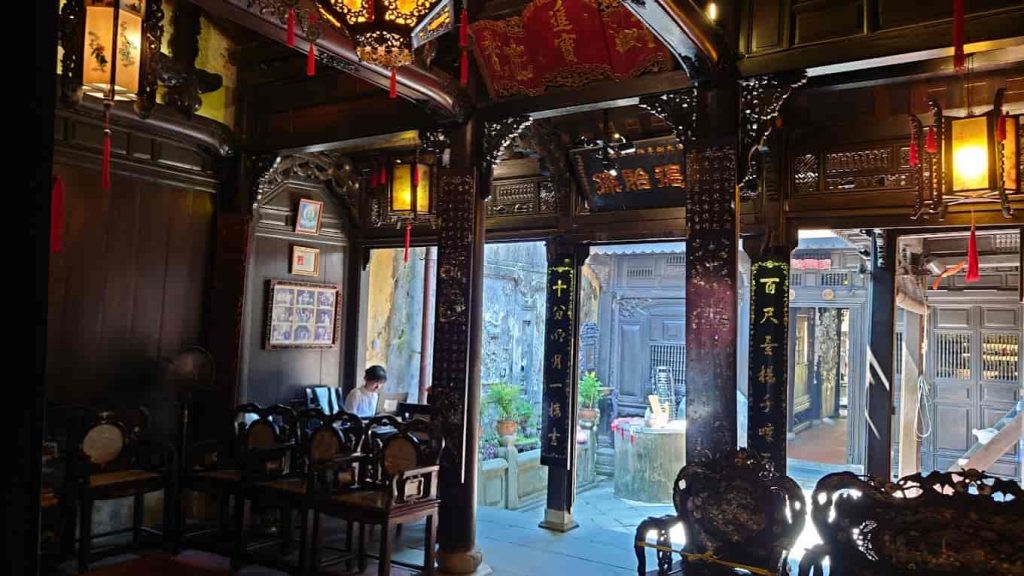
Another notable aspect is the decorative items within this ancient house. The letterbox symbolizes academic achievement and progress in learning, while the successful exam document symbolizes wealth for future generations. This is how people in the past found spiritual value in every detail. They desired and yearned for more luck, prosperity, and wealth in their own lives and for future generations.
The valuable items inside Tan Ky Ancient House in Hoi An.
According to the travel experience in Hoi An, you should definitely allocate time to visit this ancient house as it houses many special artifacts, especially horizontal lacquered boards and ancient couplets. Among them, the most notable is the “Tâm thường thái” board, symbolizing a peaceful and happy life. Another significant piece is the “Tích đức lưu tôn” board, which represents educating future generations about ethics and morals.
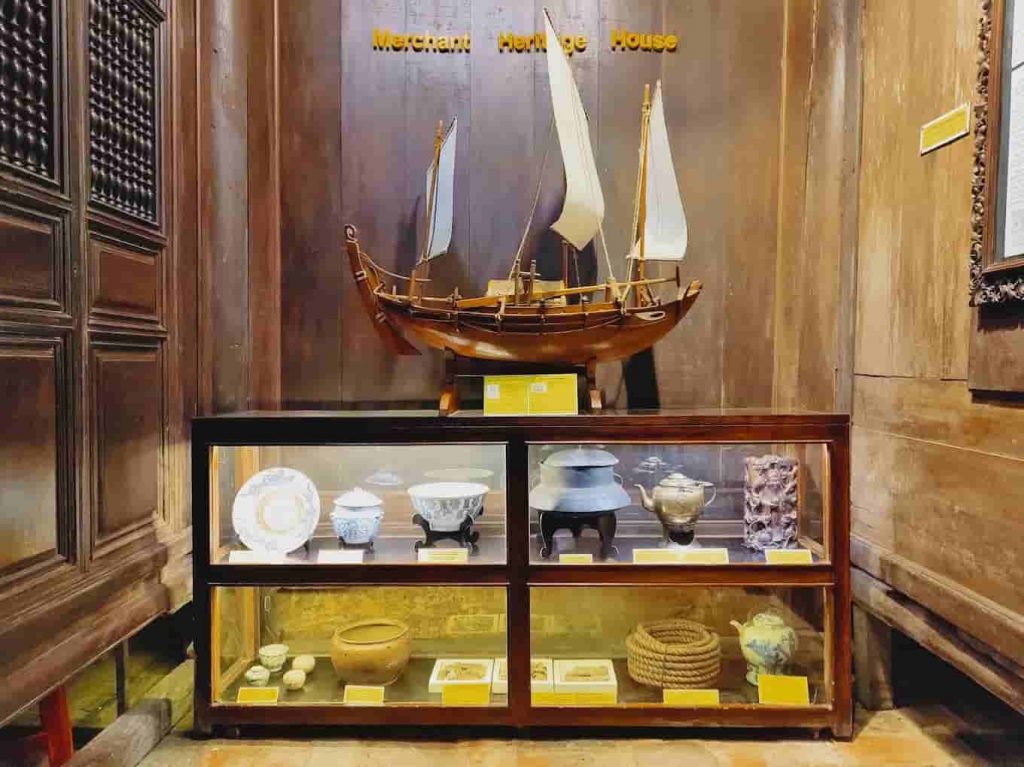
If you have a guided tour of Tan Ky Ancient House, you will be surprised by the “Bách Điểu” couplet. With 100 Han characters arranged like flying birds, it carries profound meanings that scientists believe make it a unique piece in Vietnam.
In the first section of the house, there are many sailboats and artifacts related to the trading port of Hoi An, which was once a bustling international port over 400 years ago.
Going deeper inside, you will come across a translation of the epitaph of Mr. Le Tan Ky. He was the founder of the Tan Ky trading brand. The translated content tells the life story and rise of an orphan boy who became wealthy and successful. Throughout his life, whether in his youth or old age, he always helped the poor and possessed a generous heart.
“The Kongzi Cup” – A hundred-year-old treasure.
The most precious item is perhaps the “Kongzi Cup,” which dates back approximately 550 to 600 years. The cup is closely associated with the teachings of Confucius and is extremely rare, with only one known to exist in Vietnam.
In the two small corners of the house, the owners also display many small souvenir items. Visitors can purchase them as mementos or gifts for friends and family.
Guide to getting to Tan Ky Ancient House from Da Nang.
As a famous tourist city, Hoi An does not have its own airport. To get there quickly, visitors need to fly to Da Nang International Airport. It takes an additional 50 minutes by car from Da Nang Airport to reach the ancient house. Therefore, most tourists choose to take a Da Nang – Hoi An tour or book a Hoi An tour from Da Nang.
For those who book a one-day Hoi An tour at a reasonable price, there is no need to worry about transportation or stops. The tour organizer will plan the entire trip. For independent travelers, there are many transportation options suitable for different budgets.
Renting a private car.
Getting to Tan Ky Ancient House in a private car is a fantastic option. You can travel according to your own schedule, make stops wherever you like for check-ins or photo opportunities.
Especially, considering the hot weather in Hoi An, renting a private car with a driver will provide guidance and useful sightseeing tips. DanangPrivateCar.com is a leading provider of private car services with drivers in Hoi An. Their professional drivers, with years of experience in transporting international tourists, will ensure your safest and most cost-effective trip. Book Now Trip from Da Nang Airport to Hoi An by private car.
Taking a taxi.
This is also a reasonable option for traveling from Da Nang to Hoi An to visit tourist attractions. There are many taxi companies available at Da Nang Airport, or you can arrange for a pick-up at your desired location. Taking a taxi allows you to avoid the Hoi An heat, but you may not be able to stop and enjoy the scenery along the way.
Using public transportation.
Since 2015, there has been a bus service from Da Nang to Hoi An. The fare is only 50,000 VND per round trip, which is affordable for all customers.
However, taking the bus is time-consuming, as the service operates only from 5:30 AM to 6:00 PM. Beyond this timeframe, you will not be able to travel by bus. Additionally, the bus station is 3 km away from Da Nang Airport, so you may need to use another mode of transportation to reach it.
Ticket prices and visiting time at Tan Ky Ancient House.
Ticket prices for visiting the ancient house.
The ticket price is 35,000 VND per person per visit. You are allowed to visit for 20 minutes. Children under 10 years old are exempt from ticket fees. Therefore, make sure to bring the necessary documents for your children to enjoy this discount.
Opening hours.
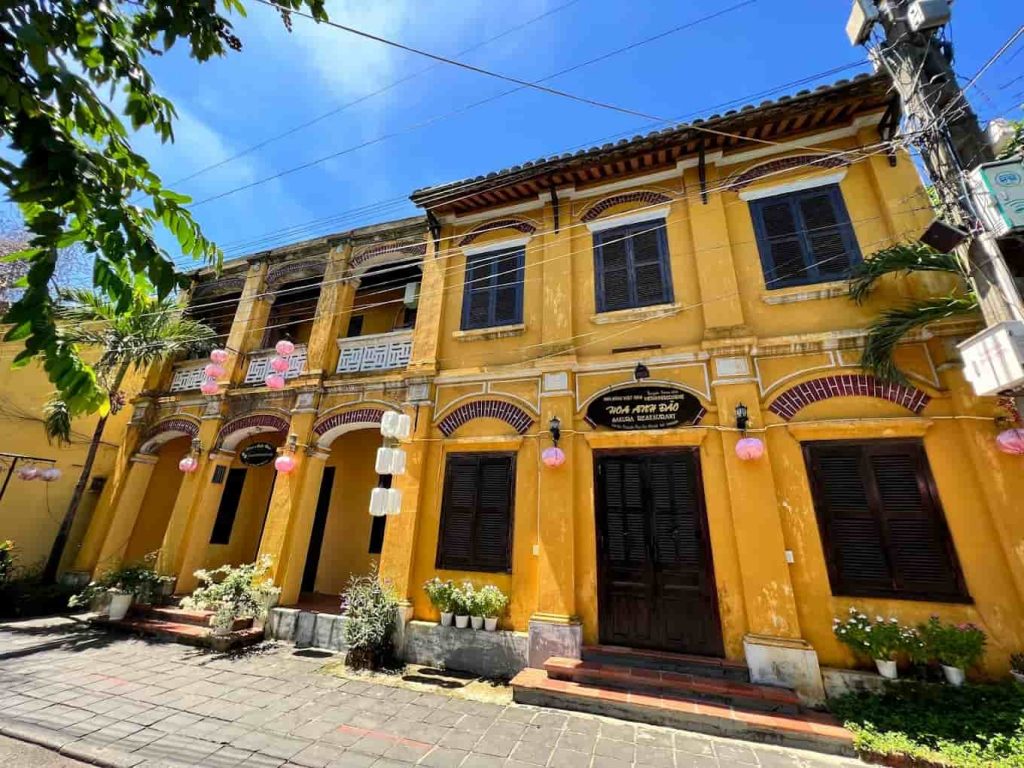
Tan Ky Ancient House is open to visitors from 8:30 AM to 5:45 PM, which is quite early compared to the weather in Hoi An. Therefore, you will have to explore the ancient house under relatively hot and sunny conditions. Remember to equip yourself with hats, caps, and sun umbrellas for your visit.
Best time to visit Tan Ky Ancient House.
Based on the travel experience of Son Tra Travel in Hoi An, the period from March to August is highly recommended for visiting Hoi An. This is also the best time to visit the ancient houses. The golden sunlight will provide you with perfect check-in photos. After visiting the ancient house, you can combine it with a visit to An Bang Beach.

Additionally, if you prefer to avoid the peak tourist season with large crowds, you can choose January and February. With cool temperatures, dining and accommodation services are more affordable.
On the 14th and 15th of the lunar month, Hoi An’s Old Town holds a lantern festival. The vibrant colors of Hoi An at night during this festival will mesmerize you with its beauty. Plan your visit to coincide with the lantern festival to immerse yourself in the colorful lantern celebration.
Hotels, Guesthouses, and Cafés near Tan Ky Ancient House.
After visiting the Tan Ky Ancient House in Hoi An, you can experience the unique cuisine in this area. There are many local specialties from Quang Nam Province such as Mi Quang (Quang-style noodles), Cao Lau (Hoi An-style noodles), grilled meat rolled in wet rice paper, steamed dumplings, and water fern cakes.
Restaurants and eateries near Tan Ky Ancient House.
Here are some famous dining addresses to keep in mind:
- Vạn Lộc Restaurant: 27 Tran Phu, Minh An Ward, Hoi An.
- Faifo Xua Restaurant: 66 Nguyen Thai Hoc, Minh An Ward, Hoi An.
- Vinh Hung Restaurant: 1 Chau Thuong Van, Minh An Ward, Hoi An.
- Hong Phuc Restaurant: 43-45 Tran Hung Dao, Minh An Ward, Hoi An.
Hotels near Tan Ky Ancient House.
Although Hoi An’s Old Town is not large, there are many affordable guesthouses, hotels, and homestays suitable for various types of tourists. If you want to stay longer, you can choose a suitable accommodation option.
- The View Homestay Hoi An: 28/6 Tran Hung Dao, Son Phong Ward, Hoi An.
- River Suites Hoi An Hotel: 4 Nguyen Du, Minh An Ward, Hoi An.
- Silkotel Hoi An: 14 Hung Vuong, Cam Pho Ward, Hoi An.
- Laluna Hoi An Riverside Hotel & Spa: 12 Nguyen Du, Minh An Ward, Hoi An.
- Volar de Faifo Villa: 132 Ngo Quyen, Minh An Ward, Hoi An.
According to travel experience in Hoi An, if you prefer a quieter environment, you can choose homestays or guesthouses located further away from the city center. They offer more affordable prices and allow you to experience tranquility after busy days.
Beautiful cafes for great check-in photos near Tan Ky Ancient House.
Amidst the hot weather in Hoi An, you may want to visit the Hoi An cafes. They provide shade, refreshment, and are popular spots for great check-in photos among young people.

- Mot Cafe: 150 Tran Phu, Minh An Ward, Hoi An.
- Phin Coffee: 132/7 Tran Phu, Hoi An.
- 92 Station Restaurant & Café: 92 Tran Phu, Minh An Ward, Hoi An.
- Faifo Coffee: 130 Tran Phu, Minh An Ward, Hoi An.
Experience for visiting Tan Ky Ancient House.
Don’t forget to keep in mind the following travel experiences for the perfect trip.
- The artifacts at Tan Ky Ancient House are valuable and fragile, so avoid touching them to prevent breakage. If you are traveling with children, keep a close eye on them.
- As the owners of the house still live on the upper floors, it is recommended to be respectful and not disturb them.
- Groups of 8 or more people can enjoy a complimentary guided tour. If you need a tour guide, you can inquire about it.
- Wear modest and respectful attire for convenience during the visit and to show respect for the place.
- Don’t forget to visit the souvenir area. Here, you will find a wide range of items for purchase as souvenirs.
Suggestions for tourist attractions near Tan Ky Ancient House.
Although Hoi An’s Old Town is small, there are many tourist attractions for you to explore, especially the historical sites and iconic symbols of Eastern culture.
Ong Temple, Hoi An.
When visiting Hoi An, don’t forget to discover the uniqueness of Ong Temple, also known as Quan Cong Temple. It was built for worshiping and praying for a peaceful and prosperous life.
The temple, built in the 17th century, still preserves its ancient charm. Its Chinese-inspired architecture is colorful and intricately decorated.
Hoi An Ancient Town
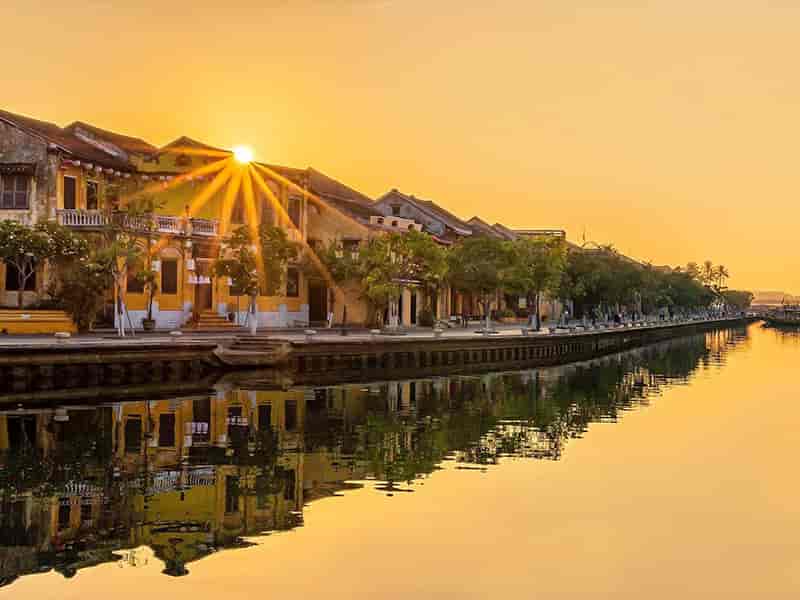
With its timeless charm and yellow walls covered in moss, Hoi An Ancient Town continues to attract visitors. It may just be yellow walls and moss-covered roofs, but it is a captivating destination that brings a sense of tranquility and serenity. A trip to Hoi An would be incomplete without exploring Tan Ky Ancient House and the Old Town.
Phuc Kien Assembly Hall.
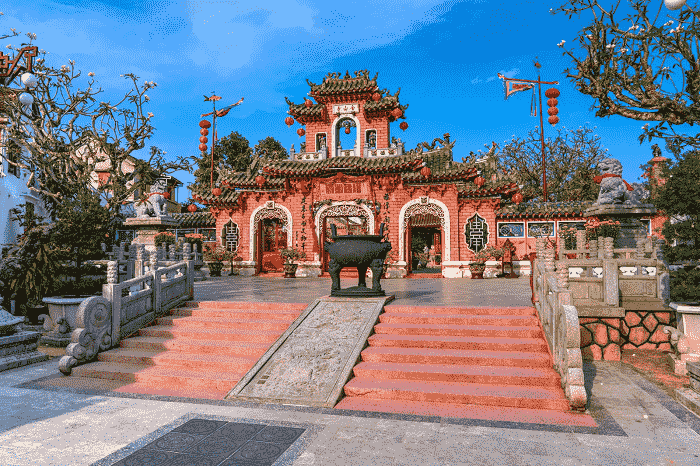
Another prominent architectural structure in Hoi An, Phuc Kien Assembly Hall, was built by the Chinese community who settled and engaged in business in Hoi An. It is a place for meetings, cultural exchanges, and worship, praying for favorable weather and a victorious year. The assembly hall is also a must-visit spot for young explorers.
Cantonese Assembly Hall.
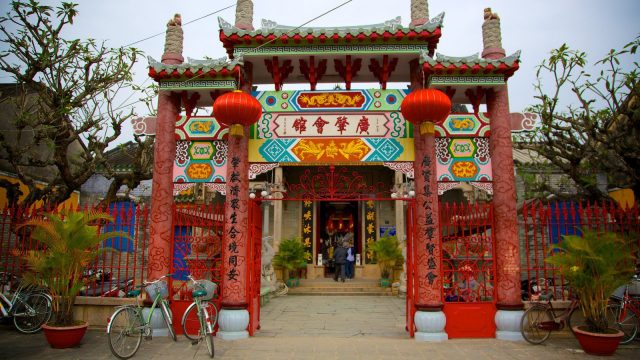
This is one of the important historical sites in Hoi An’s Old Town. The Cantonese Assembly Hall, also known as Quang Trieu Assembly Hall, is dedicated to worshipping Quan Cong from the Three Kingdoms period. Quan Cong is renowned for his bravery, integrity, and righteousness in protecting the good. The Chinese community built the assembly hall to commemorate Quan Cong and hope that his virtues will always exist within every individual.
Japanese Covered Bridge.
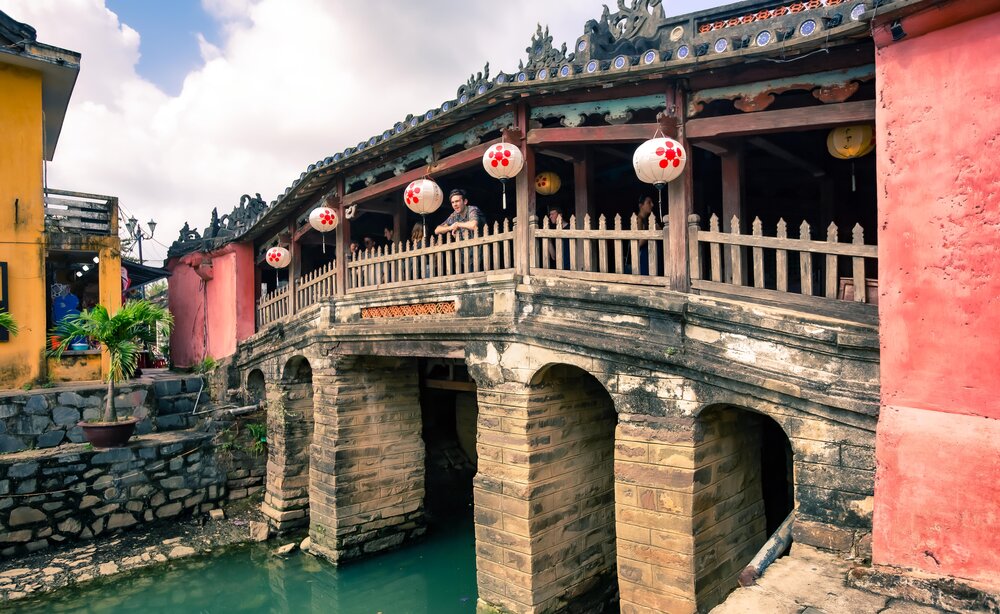
The Japanese Covered Bridge spans the Hoai River and is an iconic spot for capturing unforgettable photos when visiting Hoi An. This unique and visually appealing bridge holds spiritual significance for the locals. The bridge is dedicated to the Northern God Tran Vu, a deity in Daoism. The people of Hoi An believe that he can protect them from natural disasters and storms.
Tan Ky Ancient House is like a living museum of ancient Vietnam. The house serves as a reminder for every Vietnamese person today to strive, make efforts, and pursue success in life. It also emphasizes the importance of nurturing ethics and becoming good and useful individuals. If you have the opportunity to visit Hoi An, make sure to explore this ancient house to gain a deeper understanding of this place.

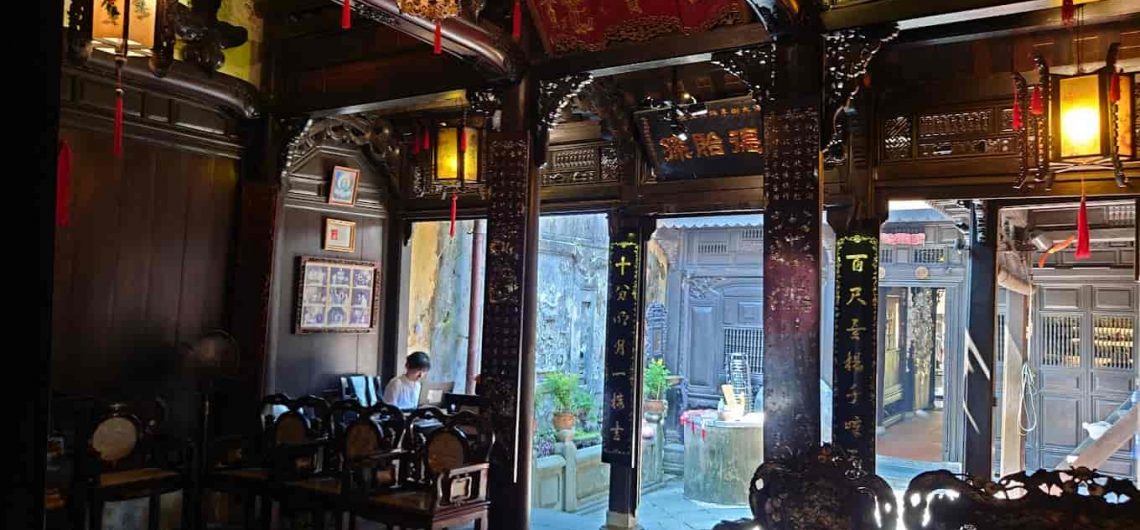
Comments